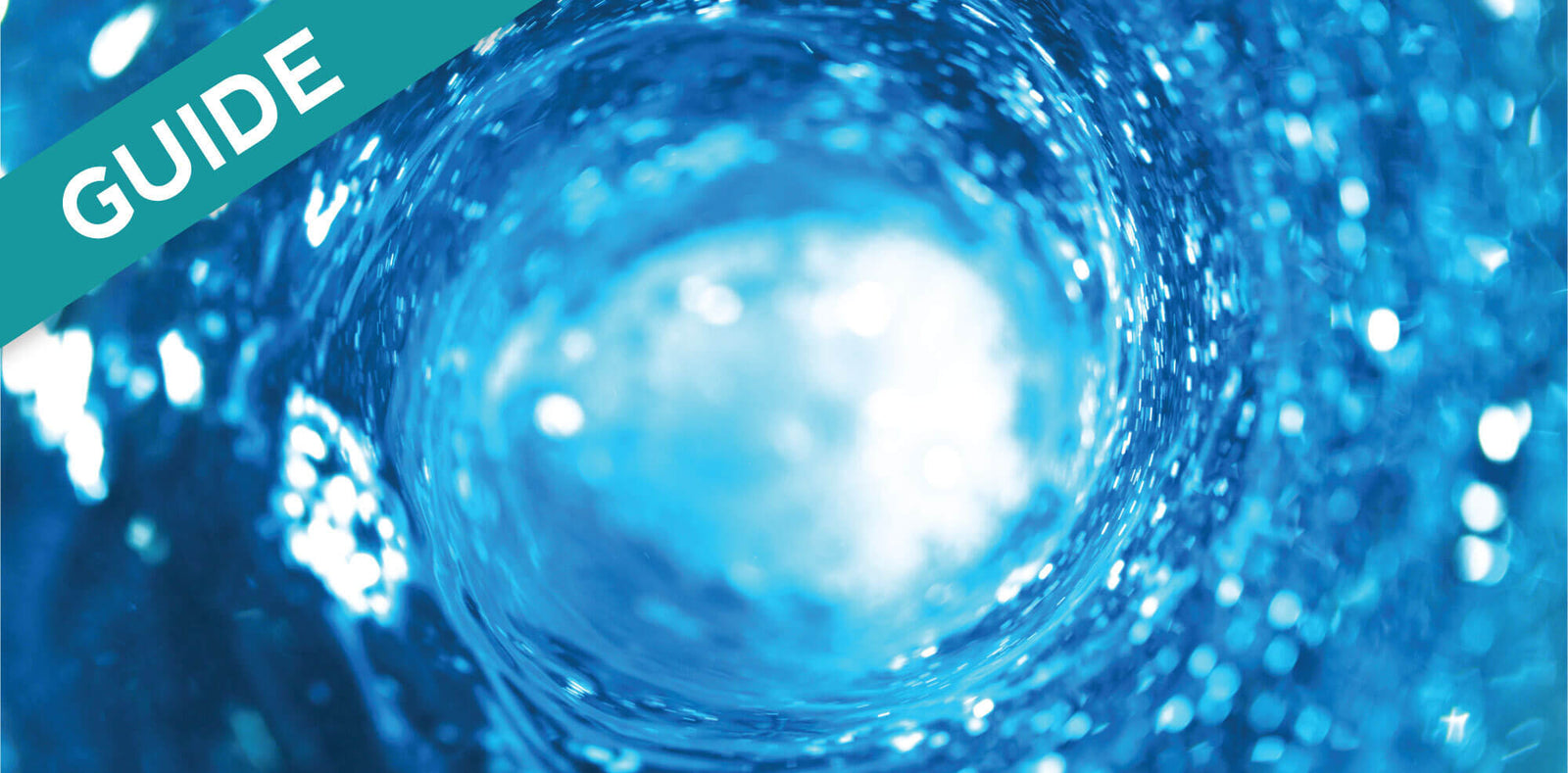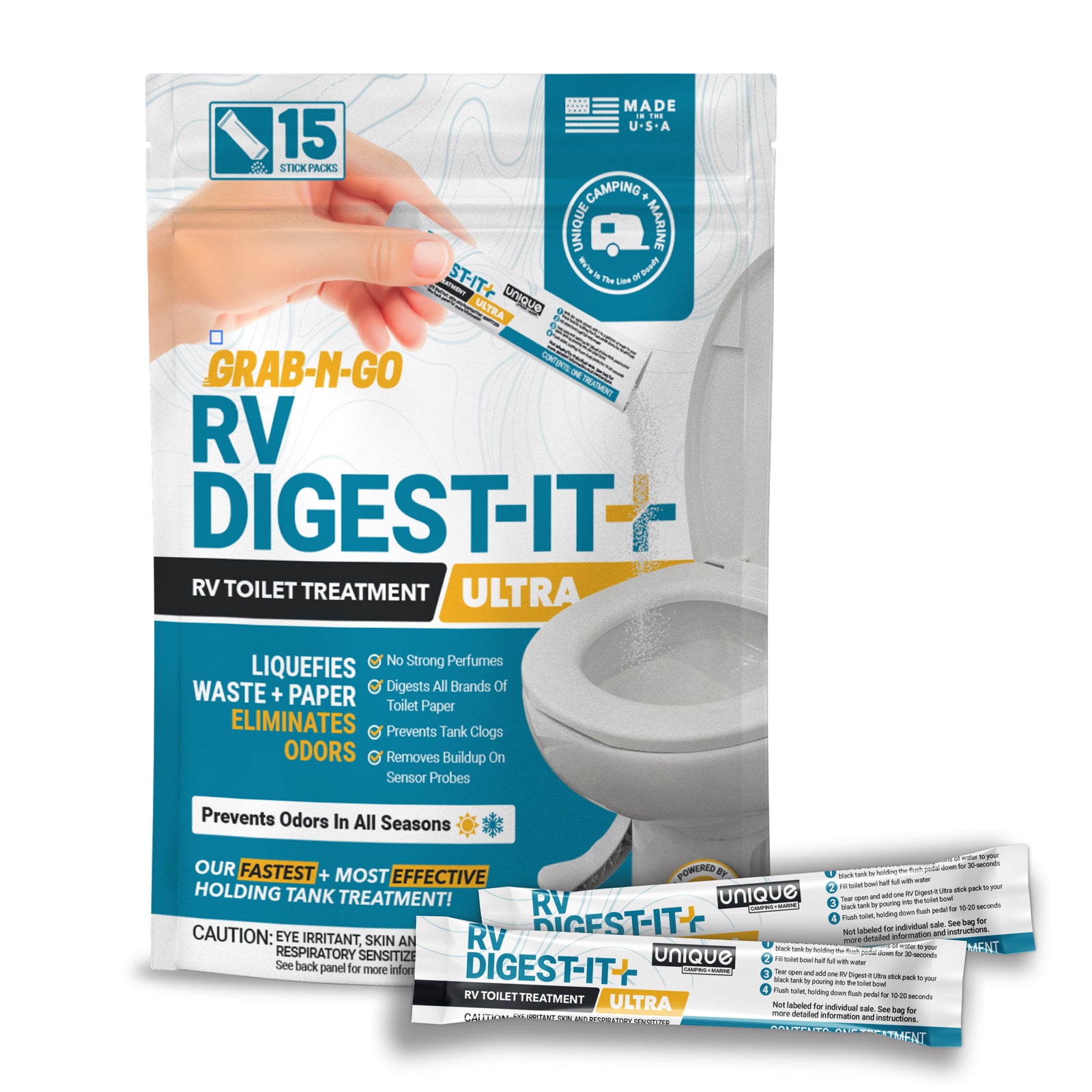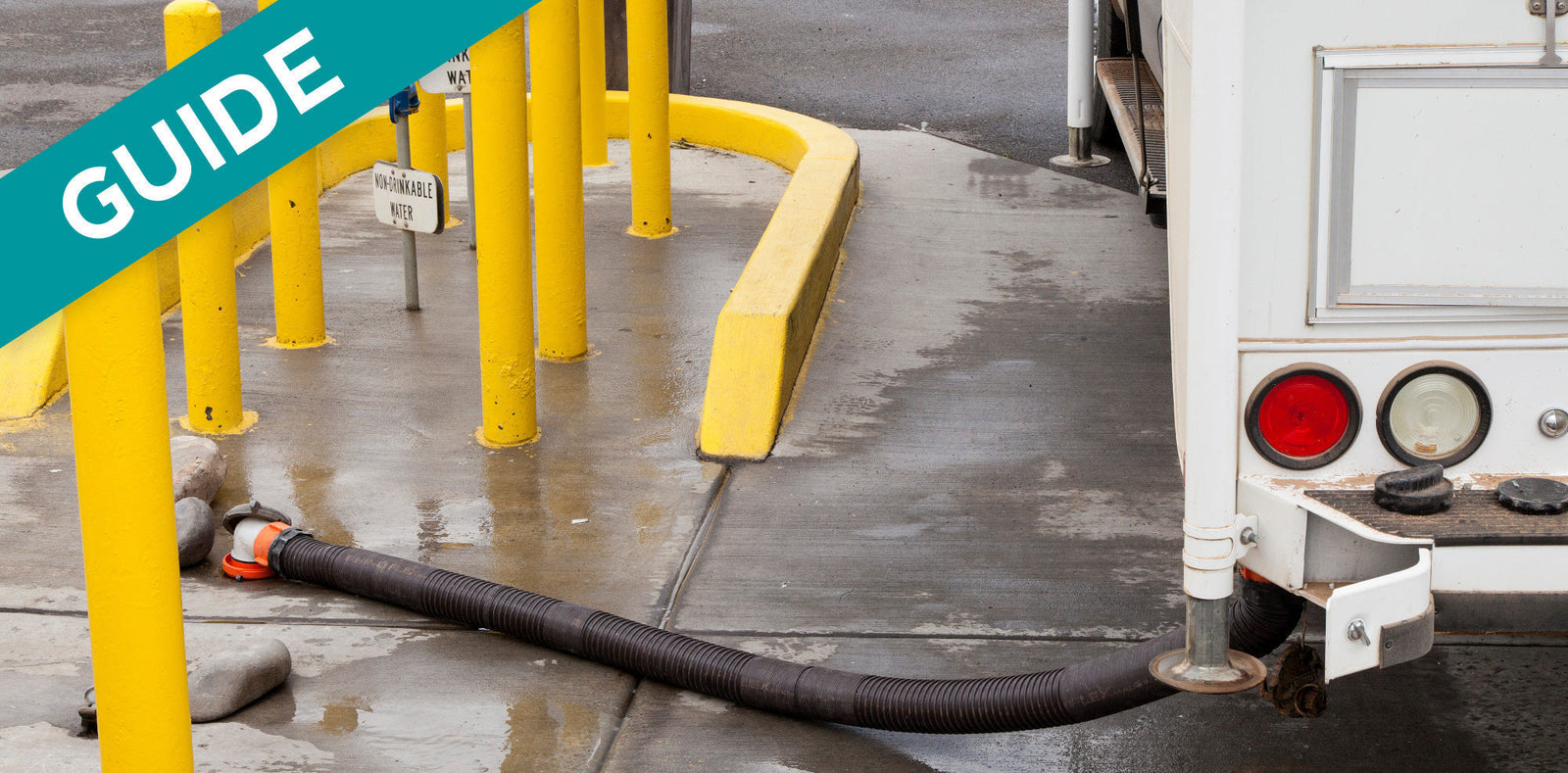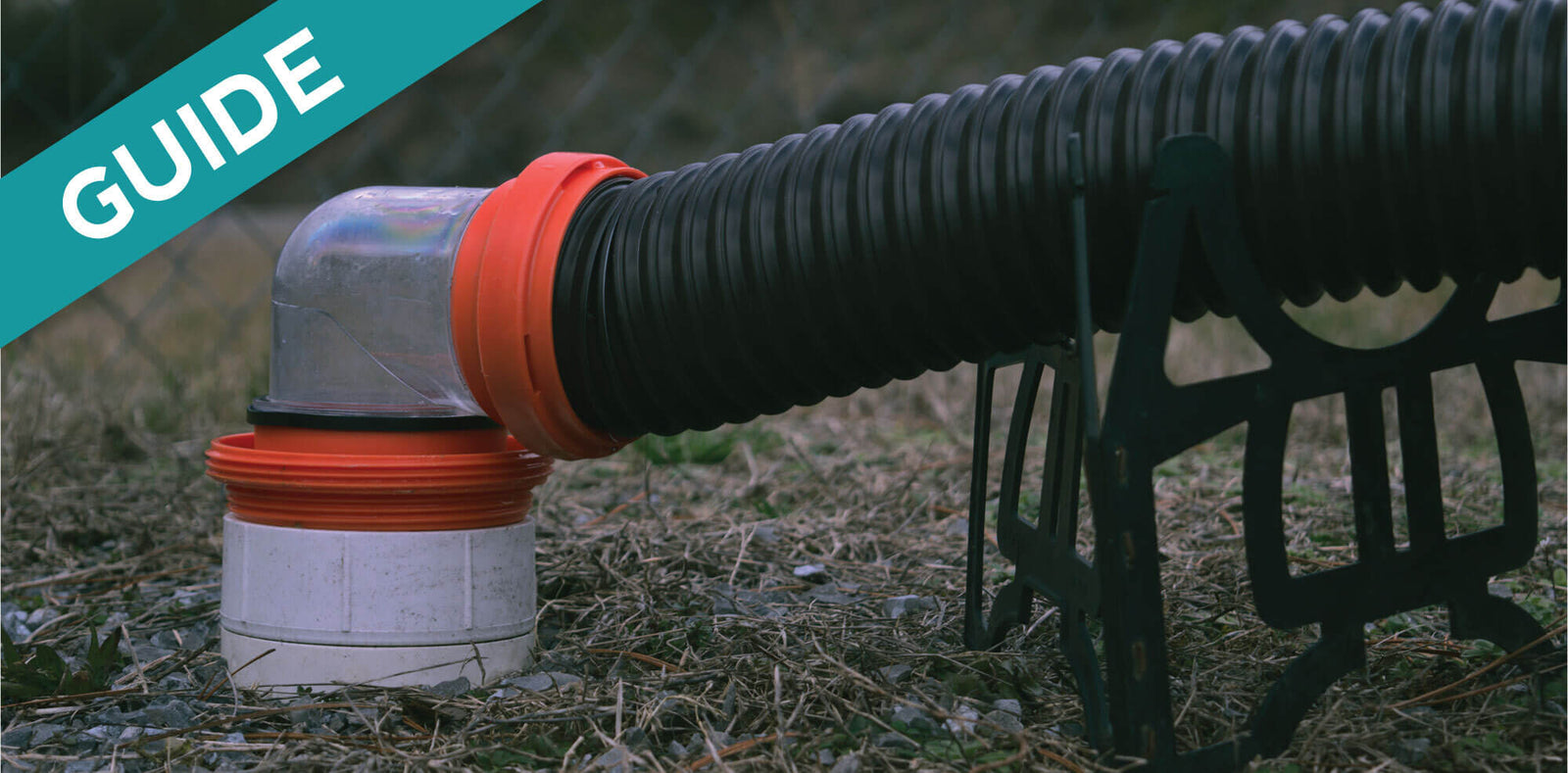
Article 3 of 9 in Series: Dumping RV Holding Tanks
Read series from the beginning
Key Points:
- Flush/rinse your black water tank(s) thoroughly after every dump.
- Perform a short rinse every time you dump.
- Without regular rinsing, sensors could misread, waste can accumulate in low points of the tank, and odors can become a major problem.
We all tend to rinse things that could spread contaminants or dirt all over our living areas because we don’t want things dirty. While it may seem as if a rinse like this is not necessary in your black tanks because they are sealed and contained, it is incredibly important if you want odors and clogs to be a non-issue on camping trips. These problems do not develop overnight; they can build over an extended period of time without you even knowing until it’s a very big, imposing problem.
This article will show you exactly why regularly rinsing your tank is so important and can help you avoid clogs and odors.
Why are Regular Rinses Good for My Tanks?
This question is easily answered with a comparison: when draining your kitchen sink after washing dishes, food particles sometimes don’t rinse down the sink immediately. They stick to the edges of the walls or the curves in the bottom as the water level recedes, and rinsing them off saves you from damage and staining later. The same holds true for your black water tank. Some amount of even the most liquefied waste will adhere to the walls and floor as it slowly drains out, and without rinsing, this thin layer of waste can end up drying out in the interior of the tank; after many trips without rinsing, there could be multiple layers of dried out waste residue on the walls and sensors, which can cause clogs, odors, and sensor malfunctions.
In the subsections below, we will discuss some of the problems you can avoid by regularly rinsing your holding tanks.
Sensors Can Become Layered with Residual Waste
The waste in black water tanks requires a high-quality bacteria and enzyme treatment (like Unique RV Digest-It Plus) to most efficiently break down waste and keep sensors clean, but the sink analogy above still applies even when using the most highly recommended products. Bacteria and enzyme treatments will break solid waste into thick, murky water, but there are still particles of waste that can cause problems. As the tank drains, a thin film of waste can cover sensors enough to cause them to misread; after many trips without rinsing, it can begin to layer and the sensors can start misreading. Allowing this thin film on the sensors, walls and floor of the tank to dry out for days or weeks at a time can easily lead to all the dreaded problems (clogs, odors, and misreading sensors), which is why we thoroghly rinsing after every dump.
Crevices and Low Points can Prevent Waste from Flowing Out
As we said above, bacteria and enzyme tank treatments (like Unique RV Digest-It Plus) will break the solid waste down to an almost liquid state, but there will always be some residual waste that accumulates in the crevices or low spots of your holding tank because tanks drain using gravity, and not every tank is level enough or shaped appropriately so that every bit of waste smoothly flows out. There can be some pretty oddly shaped holding tanks out there, which can have corners and other crevices that are really good at trapping waste.
Guide: RV Holding Tank Shapes - Could Yours Cause Waste Buildup
Some may argue that this isn’t an issue if you park your RV perfectly level, but there are several reasons why this argument doesn’t really hold up:
- It’s extremely difficult to park an RV perfectly level.
- Many holding tanks aren’t even installed perfectly level.
- Flat holding tanks (which is the norm) don’t give gravity the incline it needs to move waste out of low points in the tank.
The reality is that despite your best efforts, you will likely still have some waste residue accumulate at low points inside your RV holding tank if you don’t thoroughly rinse it out regularly.
Odors Can Increase as Trapped Waste Sits Over Time
You may not notice any odors the first several times you skip the rinsing regimen, but after many days or weeks of waste sitting in low points or crevices in the tank, it can start smelling really bad. And it’s compounded when the RV is sitting in hot weather with these bits of lingering waste in the tank. Each time you add new waste to tanks that contain dried out waste residue, you make it soft again, which helps new waste cling to it. Before you know it, you have odors rising and the makings of a compacted tank.
Avoid all these issues by performing some kind of short rinse of your tanks after every dump, something we will go over in more detail in the next section.
When Do I Need to Rinse My Holding Tanks?
The quick answer is: every time you dump. This may sound tedious to some and a waste of water, but in order to avoid the top three tank problems RVers want to avoid (clogs, odors, and misreading sensors), regular rinsing is a must. Rinses are important to flush liquified waste off the walls and floor so it doesn’t dry out as a thin film.
Why so long, you might wonder? Well, even with brief rinses on every dump, pockets of accumulated waste can resist the short spray of the 5-minute flush, but when the rinser spray is on full blast for 20 minutes or more, it’s hard for waste to hang around. This is especially true with rinser wands where you have the ability to move the spray head around slightly to encourage even more coverage to every corner of the tank.
What Tool Should I Use to Rinse My Tanks?
There are several rinsing options out there. If you’re fortunate enough to have an RV with a built-in rinsing system, the process is as easy as hooking up a water hose and turning it on when you’re finished dumping. Rinsers like these usually spin and spray to rinse waste down the sides of the tank to the black water valve; even if you have one of these installed in your RV, having a rinser wand too is a good backup plan in case the built-in rinser’s functionality fails. A rinser wand can be moved around so that all the nooks and crannies in the tank are sprayed as well, something built-in rinsers may not be able to reach.
There are different varieties of rinser wands: some are static, straight wands that work with a vertical toilet pipe that goes straight into the black tank, and some are flexible that move with the curved piping in RVs with tanks that are offset from the toilet. A backflusher is also a great idea because it applies more pressure with the water, which will help loosen any waste clinging to the tank walls. If your RV does not come with a built-in rinser system, you should get a rinser wand or a backflusher so you can keep your black tank rinsed and free of residue.
Note: If you are unsure how to use a rinser wand or other rinsing tools, refer to our guide on How to Use RV Tank Rinsers and Other Rinsing Tools.
Always keep your black valve open while rinsing your tank. Keeping it closed could lead to flooding in your RV if you get caught up with something else and forget about it. You should also make sure your gray water valve is closed while rinsing your black tank so that no black water gets washed back into the gray tank. Regular rinsing is one of the recommendations of The Unique Method and will always be worth the extra time.
Review
Let’s briefly review what we covered in this article:
- Regularly rinsing your black tank(s) will do several things:
- Prevent sensors from becoming layered with residual waste
- Dislodge waste from crevices and low points
- Pushes out waste so it cannot sit and create odors over time
- Thoroughly rinse/flush your black water holding tank after every dump.
- There are many tool options for rinsing your black tank, and which one you choose depends on your RV and your own personal preference, but here are a few of the common rinsers:
- Built-in tank rinser (comes pre-installed with certain RV models)
- Backflusher (hose attachment to shoot water back into the tank from the discharge pipe)
- Rinser wand (hand held tool that goes down the toilet and sprays outward in the tank)
Flushing your black tank really is an essential part of tank maintenance, and skipping it might quickly lead to the problems you dread facing on a camping trip, so take that extra few minutes and make it a priority. In the next article, we’ll discuss where you can legally dump your tanks and how to find those designated dumping locations.
As an Amazon Associate, Unique Camping + Marine earns from qualifying purchases

Prevent Common Problems In Your Tanks!
From misreading sensors, preventing clogs, or eliminating odors, we've got you covered no matter how you camp! All our best holding tank tips and trick information plus more can be found conveniently in one place when you download our FREE Unique Method Field Guide PDF. Achieve holding tank bliss today!
Get The Free Download Get The Free Download



